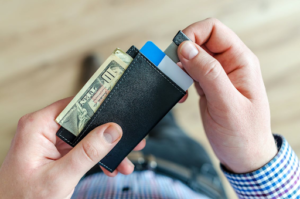
Investing is all about finding the right opportunities and maximizing returns. While stocks, real estate, and cryptocurrencies have been popular investment options, there is a unique and lucrative opportunity that has been gaining traction in recent years – investing in bourbon barrels.
Yes, you heard it right! Bourbon barrels offer a fascinating investment avenue that combines the world of finance with the art of crafting fine spirits. In this article, we will explore the art of investing in bourbon barrels and why it has become such a profitable venture.
Investing in bourbon barrels is a relatively new but highly promising investment opportunity. The demand for bourbon has been skyrocketing in recent years, both domestically and internationally. This surge in popularity has led to a shortage of aged bourbon, as it takes several years to produce high-quality whiskey.
This scarcity has created a unique investment proposition for bourbon enthusiasts and savvy investors alike. By purchasing bourbon barrels directly from distilleries and aging them, investors can tap into the growing demand for aged bourbon and potentially reap significant returns.
The investment process starts with carefully selecting the right distillery and bourbon brand. It is crucial to choose a reputable distillery with a strong track record of producing high-quality bourbon. Additionally, considering the brand’s reputation and market demand can help ensure a profitable investment.
Once the barrels are purchased, they are stored in secure, climate-controlled warehouses where they can age for several years. During this time, the bourbon undergoes a transformative process, developing complex flavors and aromas that make aged bourbon so prized.
The Bourbon Boom
Bourbon, a type of American whiskey, has seen a significant surge in popularity in recent years. The ongoing bourbon boom can be attributed to a combination of factors, including changing tastes, growing interest in craft spirits, and successful marketing campaigns. This increased demand for bourbon has created a unique investment opportunity in the form of bourbon barrels.
Investing in bourbon barrels has become a lucrative endeavor due to the rising demand for this beloved American spirit. As more and more people become interested in bourbon, distilleries are struggling to keep up with the growing consumption.
This shortage has created a market for investors to purchase and store bourbon barrels, allowing them to capitalize on the increasing value of this aged spirit.
One of the main factors contributing to the surge in bourbon’s popularity is changing tastes. Consumers are shifting away from traditional liquors and are looking for unique, flavorful options.
Bourbon satisfies this demand with its distinct characteristics and rich, complex flavors. Additionally, the rise of the craft spirits movement has further fueled interest in bourbon. People are seeking out small-batch, artisanal products, and bourbon fits perfectly into this trend.
Investing in bourbon barrels offers a unique opportunity for those looking to diversify their portfolio.
The Investment Process
Investing in bourbon barrels requires careful consideration and a deep understanding of the industry. Here’s a step-by-step guide to help you navigate the world of investing in bourbon barrels:
Research the Bourbon Industry
Before diving into the world of investing in bourbon barrels, it is essential to familiarize yourself with the bourbon industry. Understand the history, production process, and key players in the market. Stay updated on industry trends and news to make informed decisions.
Understand the Barrel Aging Process
Bourbon barrels play a crucial role in the aging process of bourbon. Learn about the factors that affect the flavor and quality of bourbon during barrel aging. Understand the specific requirements and regulations surrounding bourbon aging, such as the type of barrels used and the minimum aging period.
Assess the Investment Potential
Evaluate the investment potential of bourbon barrels by considering factors like market demand, production volume, and brand recognition. Study the historical performance of the bourbon market and analyze its growth prospects.
Choose the Right Bourbon Distillery
Identify reputable bourbon distilleries that have a track record of producing high-quality bourbon. Look for distilleries that follow traditional production methods and have a strong brand presence. Consider visiting the distilleries personally to gain firsthand knowledge of their operations and aging processes.
Understand the Risks Involved
Like any investment, investing in bourbon barrels carries its own set of risks. Market volatility, changes in regulations, and shifts in consumer preferences can impact the value of bourbon barrels.
Decide on Ownership Type
When investing in bourbon barrels, you have the option to own physical barrels or invest in barrel ownership programs. Physical ownership requires storage and maintenance, while barrel ownership programs provide convenience but often come with management fees. Decide which ownership type aligns with your investment goals and preferences.
Consider Storage and Insurance
If you opt for physical ownership, consider the cost and logistics of storing and insuring your bourbon barrels. Proper storage conditions are crucial to maintain the quality of the bourbon and maximize its value. Ensure you have appropriate insurance coverage to protect your investment from any unforeseen risks.
Monitor and Evaluate
Keep a close eye on the bourbon market and regularly assess the value of your investment. Stay informed about industry trends, changes in regulations, and market dynamics. Evaluate the performance of your investment periodically and make adjustments as needed.
The Potential Returns
Investing in bourbon barrels can offer attractive returns for savvy investors. The value of bourbon barrels has been steadily increasing, with some barrels appreciating at an average annual rate of 5-10%.
Successful investments can yield significant profits, especially if you have carefully selected high-quality barrels and managed the aging process effectively.
Bourbon barrels have become an increasingly popular investment option due to their unique characteristics and the growing demand for aged bourbon. The value of bourbon barrels is primarily driven by scarcity and the aging process, which enhances the flavor and quality of the bourbon.
Investing in bourbon barrels requires careful consideration and research. It is essential to select high-quality barrels from reputable distilleries. Factors such as the brand reputation, production methods, and aging conditions can significantly impact the value of the barrels. Additionally, understanding market trends and consumer preferences is crucial to make informed investment decisions.
Risks and Considerations
While investing in bourbon barrels can be highly profitable, it is important to be aware of the risks and considerations involved:
1. Fluctuating market demand: The popularity of bourbon can be subject to trends and changing consumer preferences. Therefore, investing in bourbon barrels comes with the risk that market demand may decrease, potentially reducing the value of your investment.
2. Aging process: Bourbon typically needs to be aged for a minimum of two years to be legally considered bourbon. However, longer aging can result in a higher quality product and potentially increase its value. It is important to consider the time and storage costs associated with aging the bourbon barrels.
3. Storage conditions: Proper storage conditions are crucial for the aging process of bourbon. Factors such as temperature, humidity, and light exposure can significantly impact the quality and taste of the bourbon.
4. Production regulations and compliance: Bourbon production is subject to strict regulations, including specific ingredients, distilling methods, and aging requirements. Failure to comply with these regulations can result in legal issues and penalties.
5. Limited liquidity: Investing in bourbon barrels can tie up your capital for an extended period, as the value of the bourbon increases with aging. If you require quick access to your investment or need liquidity in the short term, bourbon barrels may not be the best option.
6. Barrel selection and quality: Not all bourbon barrels are created equal. Factors such as the wood type, char level, and previous contents of the barrel can significantly impact the flavor and quality of the bourbon.
7. Market knowledge: Investing in bourbon barrels requires a deep understanding of the bourbon market, including trends, pricing, and consumer preferences.
8. Taxes and regulations: Investing in bourbon barrels may also come with tax implications. It is important to consult with a tax professional to understand the tax obligations and regulations associated with your investment, both at the time of purchase and when selling the bourbon.
Conclusion
Investing in bourbon barrels presents a fascinating opportunity for those seeking to diversify their investment portfolio and capitalize on the bourbon boom.
With the right research, barrel selection, storage, and exit strategy, investors can potentially achieve substantial returns while enjoying the unique experience of being part of the bourbon industry.
However, it is crucial to carefully consider the risks and challenges associated with this investment avenue. As with any investment, seeking professional advice and staying informed about industry trends are key to success in the art of investing in bourbon barrels.
Investing in bourbon barrels can be an intriguing option for investors looking to expand their investment portfolio and take advantage of the growing popularity of bourbon.
By conducting thorough research, choosing the right barrels, ensuring proper storage conditions, and having a well-planned exit strategy, investors have the potential to earn significant profits while also being a part of the bourbon industry.
However, it’s important to note that there are risks and challenges involved in this investment. The bourbon market can be unpredictable, with fluctuations in demand and production causing prices to fluctuate.




